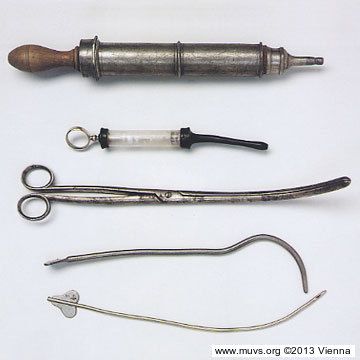About
Despite the daunting challenge of collecting information and artifacts surrounding one of the most unspoken parts of our culture, Vienna's Museum of Contraception and Abortion has managed to gather an impressive collection of contraceptive curios that tell the often tragic tale of pregnancy avoidance and termination.
Founded in 2003 by gynecologist and abortion provider Dr. Christian Fiala, the museum has met with praise and controversy in equal measure. The collection is located in Vienna, Austria, a country with one of the most intolerant attitudes towards contraception and consequently one of the highest abortion rates in Europe. Undaunted by the critics, Fiala opened the museum with the express goal of educating visitors about the necessity and reality of pregnancy avoidance through the artifacts and history of the precaution.
The museum is split into two wings, one devoted to contraception and the other devoted to abortion. As visitors enter the museum, they must first pass through the contraceptive wing. This section collects a number of historical forms of birth control ranging from the harmful to the seemingly insane. There are soaps, sponges, plugs, and washes that were said to prevent insemination, many of which released harmful (if not fatal) agents into the users body, alongside condoms made from everything from pig bladders to sheep skin. Each piece has information placing the item into a historical or cultural context which gives the exhibit a gravity well above gawking at the insanity of the past.
Once through the contraceptive portion of the museum, guests enter the abortion portion. This half of the museum explores the varied ways that women have tried or been instructed to do in order to terminate unwanted pregnancies. The often gruesome remainders of abortion's history include pins, hangers, and other tragic instruments used to induce a miscarriage. While sometimes uncomfortable, the displays are invaluable in understanding the need for the safe abortion treatments we have today.
Related Tags
Published
April 9, 2014























